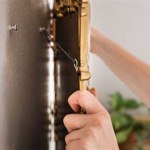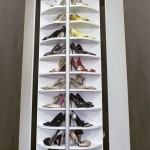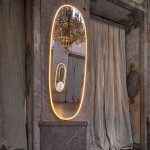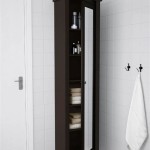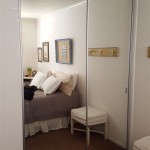How To Identify A Two-Way Mirror
Two-way mirrors, also known as one-way mirrors, are a fascinating optical phenomenon that plays a crucial role in various applications, including surveillance, interrogation rooms, and even some public restrooms. The ability to see through a seemingly ordinary mirror while remaining unseen from the other side is both intriguing and potentially concerning. This article aims to provide a comprehensive guide on how to identify a two-way mirror, empowering individuals to be aware of their surroundings and potential privacy concerns.
Visual Inspection
The most straightforward method for identifying a two-way mirror involves a thorough visual inspection. The key lies in understanding the way light reflects off a mirror's surface. A standard mirror, typically found in homes and bathrooms, is designed to reflect virtually all light that strikes it. This results in a clear reflection of the viewer with high fidelity. Conversely, a two-way mirror is designed to reflect only a portion of the incoming light. This difference in reflectivity can be detected by employing the following steps:
1.
Examine the reflection:
Look closely at your reflection in the suspect mirror. Observe whether it appears slightly darker or less clear than a typical mirror. This diminished reflectivity is a telltale sign of a two-way mirror. 2.Shine a light:
Approach the mirror and shine a flashlight or strong light source at its surface. If the mirror is a two-way mirror, the light will partially pass through it, revealing a faint glow on the other side. This is a more reliable indicator than visual inspection alone. 3.The "finger test":
Place your finger against the mirror's surface. If you can see a gap between your finger and its reflection, it is likely a standard mirror. On a two-way mirror, your finger will appear touching the reflection, as the light passes through the glass rather than reflecting off it. This test is not foolproof, but it can provide a useful clue.Light Transmission
The concept of light transmission is fundamental to understanding how a two-way mirror functions. A two-way mirror essentially consists of a partially reflective glass sheet. The reflectivity of this sheet is adjusted to allow a certain percentage of light to pass through it. This transmission of light is the key distinguishing factor between a two-way mirror and a standard mirror.
To illustrate, imagine a room where one side is dimly lit while the other is brightly illuminated. If a two-way mirror is strategically placed between these two sides, an observer in the brightly lit room can see through the mirror into the dimly lit room. This happens because the light from the bright side reflects off the mirror's surface, making it visible, while the dimmer light from the other side passes through the mirror, revealing the other room. This principle is commonly employed in surveillance applications, allowing observers in a brightly lit control room to monitor a dimly lit interrogation room.
Environmental Factors
Beyond the visual and optical properties of the mirror itself, external environmental factors can also influence the effectiveness of a two-way mirror. The lighting conditions in the room on either side of the mirror play a significant role in determining visibility. Here's how environmental factors can affect identification:
1.
Light intensity:
As explained previously, a greater difference in light intensities between the two sides of the mirror enhances visibility. If the room on the observer's side is significantly brighter than the room on the other side, the mirror will appear more reflective, making it more difficult to see through it. 2.Angle of observation:
The angle at which an individual views the mirror can affect the amount of light that reflects back to their eyes. Viewing the mirror at a perpendicular angle will generally yield a clearer reflection, while viewing it at a more oblique angle may reduce reflectivity, making it easier to see through the mirror. 3.Room layout:
The arrangement of furniture and other objects in the room can influence the visibility through a two-way mirror. For instance, placing objects in front of the mirror can obstruct the view from the other side, making it more difficult to see through.By understanding the principles of light reflection, transmission, and the influence of environmental factors, individuals can effectively identify a two-way mirror. While these techniques are not foolproof, they provide valuable tools for increasing awareness and protecting privacy. Remember, it's crucial to maintain a healthy level of skepticism when encountering seemingly ordinary mirrors, as they might hold hidden secrets.
How You Do A Quick Check For Cams Or Two Way Mirrors In Trial Rooms Quora

How To Tell If A Mirror Is Two Way Or Not 8 Steps With Pictures

How To Tell If A Mirror Is Two Way Or Not 8 Steps With Pictures

How To Tell If A Mirror Is Two Way Or Not Quora

How To Detect A Two Way Mirror Fingernail Test

How To Tell If You Re In A Room Restroom Motel Etc With Mirror Or
Is It Glass Or A Two Way Mirror The Balancing Act

How To Tell If A Mirror Is Two Way Or Not 8 Steps With Pictures

How To Tell If A Mirror Is Two Way Or Not 8 Steps With Pictures Hotel Mirrors Double Sided

How To Check For Two Way Mirrors And Surveillance Idea Digezt Mirror Life S

